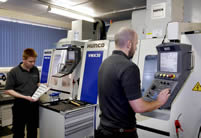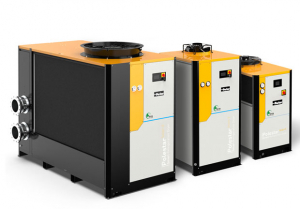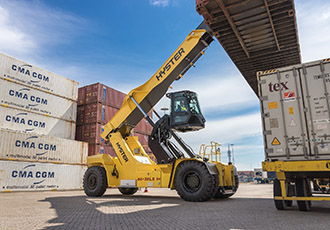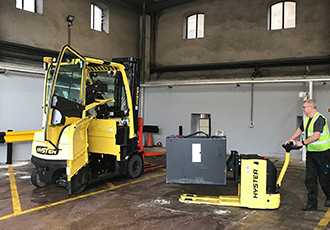5-AXIS MACHINING OF SPACE OBSERVATION INSTRUMENTS
13th December 2011
Source:
Hurco Europe Ltd

Parts for instrumentation used in space observation, both terrestrial and satellite-based, are machined to tight tolerances on two Hurco vertical machining centres (VMCs) at Rutherford Appleton Laboratory (RAL), near Didcot.
High accuracy is essential, as radio telescopes for which parts are being made, including the ALMA instrument in northern Chile, have to detect high frequency signals in the 95 GHz to 2.5 THz range. Wavelengths are consequently very short and sensitive to dimensional variation in sensing devices.
The latest machining centre in the Millimetre Technology Group’s Precision Development Facility (PDF) within RAL Space, as the Department is known, is a 5-axis Hurco model, VM10U, which was installed in April 2011.
Fitted with Renishaw tool setting, the machine was purchased jointly with another department on the RAL campus, ISIS, which conducts research into atomic scale properties of materials using a suite of neutron and muon instruments. Components required for its beamline accelerators also have to be very accurate and are made on the Hurcos.
An example of RAL Space hardware machined on the 5-axis VM10U are components which when assembled form parts for the Broadband Radiometer, destined for launch into space in 2012. The component, machined in 3+2-axis mode from solid aluminium to dimensional tolerances at the micron level, has to be as light as possible. To this end, the core is removed by wire-cutting after milling to leave a 0.8 mm wall all round.
Mat Beardsley, manager of the PDF, explained, Generally, subcontractors do not like making parts such as this, as the machining strategies take a long time to develop for novel bespoke components.
Due to the high machining accuracies associated with this type of componentry, it was difficult to find outside suppliers to take on the work, which was a driver for investing in our own 5-axis machine.
Typical ISIS components produced on a Hurco 3-axis VMC, a VM30 installed in the summer of 2010, are tantalum parts for a beamline target, machined using coated solid carbide cutters to accuracies down to 10 microns.
A high surface finish is specified in readiness for when the parts are assembled using a hot isostatic pressing process. This means that a good machined finish is needed after the parts leave the VM30, which is not easy to achieve due to the material's tendency to tear. Machining strategies as well as feeds and speeds for the tooling have consequently been modified within the CAD/CAM system used in RAL Space.
More complicated components for the ISIS target are put onto the 5-axis machine, such as the tantalum flange and cross flow guide that are subsequently pressed isostatically around a tungsten core. The introduction of 5-axis machining has also made huge savings in the manufacturing time of several integral parts for space flight hardware.
Mr Beardsley commented, Before investing in the Hurco machines, we had used other makes of VMC for more than 10 years and they are still in service.
When the ISIS beamline work came along, however, we needed a bigger capacity machine but we have limited floor space. So we were looking for maximum working volume in the smallest possible footprint and the Hurco VM30 was ideal in this respect [1,270 x 508 x 508 mm axis travels / 2,830 x 2,770 mm floor area].
The same goes for the VM10U, which also offers a generous machining cube for the space it occupies. So in view of our good experience with the previous 3-axis Hurco VMC, it was the logical choice when we needed a 5-axis machine.
The latest machining centre in the Millimetre Technology Group’s Precision Development Facility (PDF) within RAL Space, as the Department is known, is a 5-axis Hurco model, VM10U, which was installed in April 2011.
Fitted with Renishaw tool setting, the machine was purchased jointly with another department on the RAL campus, ISIS, which conducts research into atomic scale properties of materials using a suite of neutron and muon instruments. Components required for its beamline accelerators also have to be very accurate and are made on the Hurcos.
An example of RAL Space hardware machined on the 5-axis VM10U are components which when assembled form parts for the Broadband Radiometer, destined for launch into space in 2012. The component, machined in 3+2-axis mode from solid aluminium to dimensional tolerances at the micron level, has to be as light as possible. To this end, the core is removed by wire-cutting after milling to leave a 0.8 mm wall all round.
Mat Beardsley, manager of the PDF, explained, Generally, subcontractors do not like making parts such as this, as the machining strategies take a long time to develop for novel bespoke components.
Due to the high machining accuracies associated with this type of componentry, it was difficult to find outside suppliers to take on the work, which was a driver for investing in our own 5-axis machine.
Typical ISIS components produced on a Hurco 3-axis VMC, a VM30 installed in the summer of 2010, are tantalum parts for a beamline target, machined using coated solid carbide cutters to accuracies down to 10 microns.
A high surface finish is specified in readiness for when the parts are assembled using a hot isostatic pressing process. This means that a good machined finish is needed after the parts leave the VM30, which is not easy to achieve due to the material's tendency to tear. Machining strategies as well as feeds and speeds for the tooling have consequently been modified within the CAD/CAM system used in RAL Space.
More complicated components for the ISIS target are put onto the 5-axis machine, such as the tantalum flange and cross flow guide that are subsequently pressed isostatically around a tungsten core. The introduction of 5-axis machining has also made huge savings in the manufacturing time of several integral parts for space flight hardware.
Mr Beardsley commented, Before investing in the Hurco machines, we had used other makes of VMC for more than 10 years and they are still in service.
When the ISIS beamline work came along, however, we needed a bigger capacity machine but we have limited floor space. So we were looking for maximum working volume in the smallest possible footprint and the Hurco VM30 was ideal in this respect [1,270 x 508 x 508 mm axis travels / 2,830 x 2,770 mm floor area].
The same goes for the VM10U, which also offers a generous machining cube for the space it occupies. So in view of our good experience with the previous 3-axis Hurco VMC, it was the logical choice when we needed a 5-axis machine.
Similar articles
More from Hurco Europe Ltd
- Four big launches at Hurco's 50th year at MACH 5th March 2018
- EDM company expands milling capacity with 5-axis machines 12th February 2018
- Machining solutions for simple and complex solutions 10th January 2018
- Aerospace subcontractor expands machining centre 20th December 2017




.jpg)







Write a comment
No comments